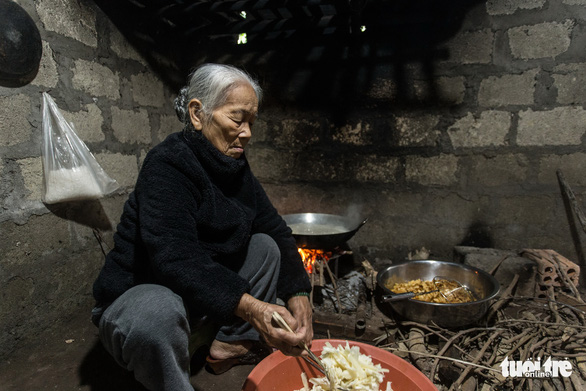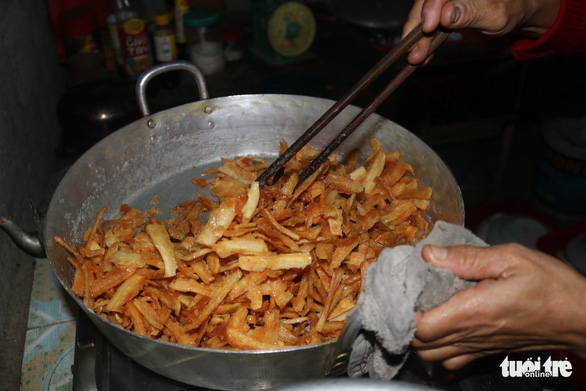Le Thi Tu, a woman living in the heritage-rich Hue City of Thua Thien-Hue Province, located in central Vietnam, knows her way to liven up the holiday spirit with the exuberant scent of candied cassava, a humble homemade recipe that she has perfected over five decades.
“Cassava was the provision that kept generations of Vietnamese nourished. I make candied cassava every year as a tribute to the traditional food of our predecessors,” Tu said about the tradition of making the treat every Lunar New Year, or Tet holiday.
According to Tu, her hometown Hue is dubbed 'the land of candied fruits,' which still upholds a time-honored tradition of turning every piece of produce available, from ginger and lotus seeds to kumquat, into unique confections.
Tu herself carried on the tradition of making candied cassava from her family since a very young age.
During those trying times, most of the other kinds of candied fruits were out of their budget, which made the mundane cassava the only ingredient available for the recipe.
As the years went by, it became a well-kept tradition within the household.
“Candied cassava boasts fair sweetness and crunchiness rather than the original full-bodied starchiness of the tuber,” Tu described.
“It used to show up in the Tet feasts of destitute families in [Thua Thien-Hue], so we call it ‘poor man’s candy’."
Tu and her daughter make almost 300 kilograms of candied cassava each year before distributing them as gifts for relatives and neighbors and selling them to regular customers.
This year, the tradition lives on in Tu’s humble kitchen.
While timing the ideal caramelized crispness on the firewood-heated wok, she radiates pure joy.
According to her, the tip to make the perfect candied cassava is picking the right kind of produce, which will dictate the bitterness in the end result.
|
|
| Le Thi Tu sugar-coats pieces of candied cassava in her kitchen in Thua Thien – Hue Province, central Vietnam. Photo: Nguyen Trong / Tuoi Tre |
In Hue, the cassava variant of choice is 'ba trang' (three moons).
For the processing, the cassava must be peeled and stripped off hardened spots, then cleaned and chopped into ten-centimeter-long pieces.
The next step is steaming them with pandan leaves for 30 minutes, then cooling them off to room temperature.
Steamed pieces must be sliced and deep-fried to crisp, then simmered with sugar and pandan leaves for aroma.
Before the emergence of cooking oil, pieces of cassava used to be sun-dried and roasted in sand before sugar-coating, Tu recalled.
Spending 50 years perfecting the craft of making candied cassava, Tu cannot help but think of the future of the meager dish.
“This material-oriented world is charging ahead nonstop," Tu remarked.
"I wonder if there’s a day when no one remembers what the mundane pieces of sweet potato and cassava were like."
Yet, with sparks of passion in her eyes, it rings true that the time-honored confection will not go anywhere soon.
Like us on Facebook or follow us on Twitter to get the latest news about Vietnam!





























